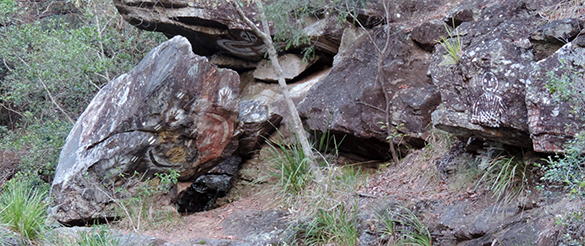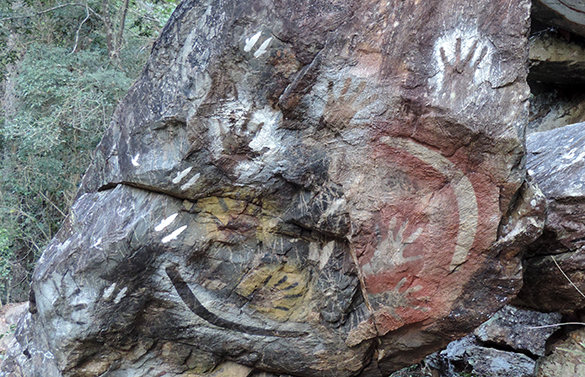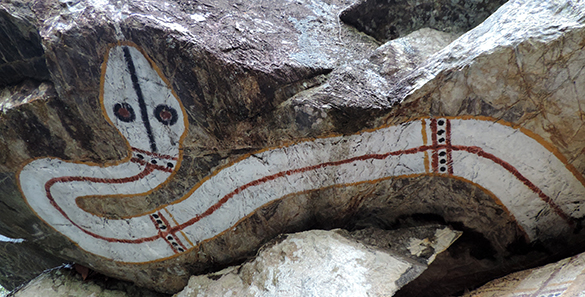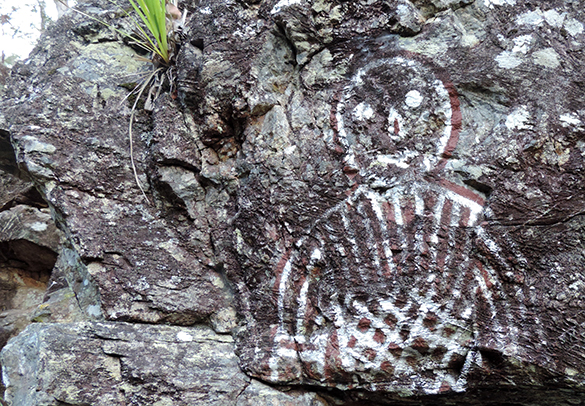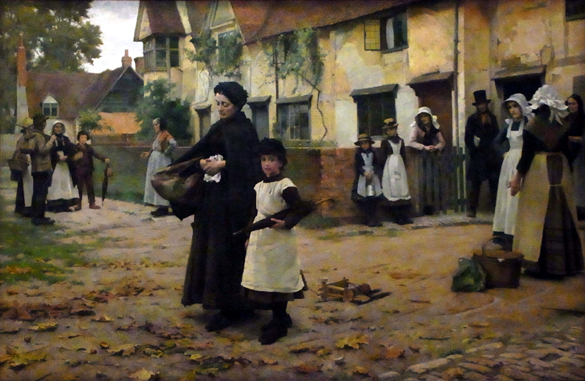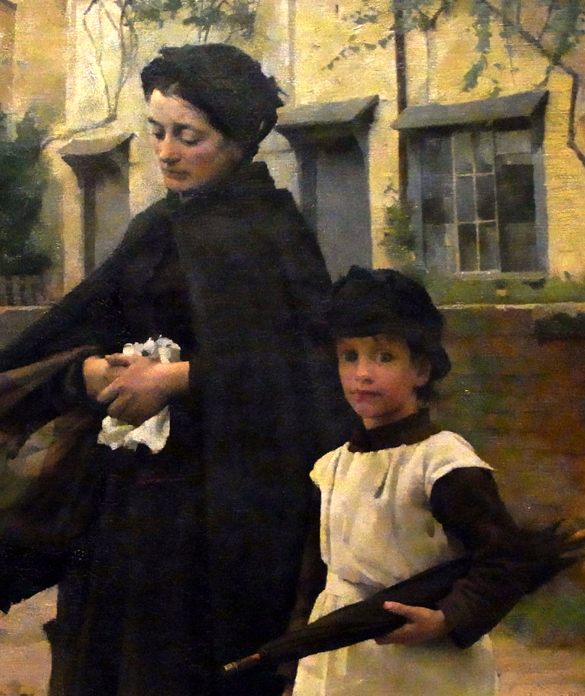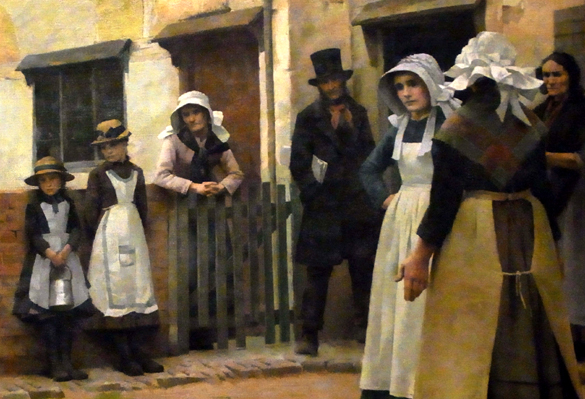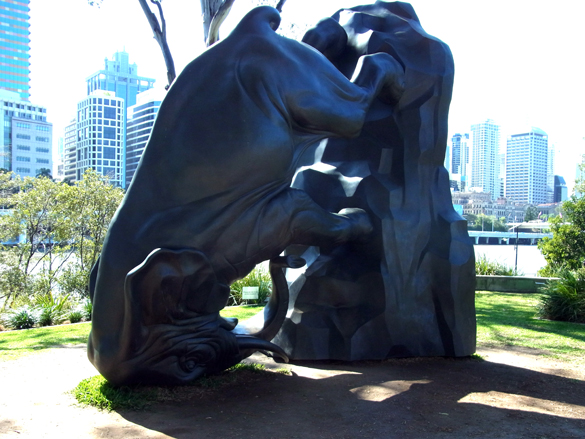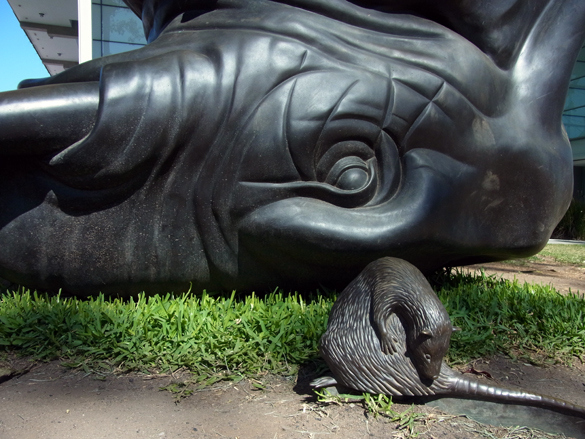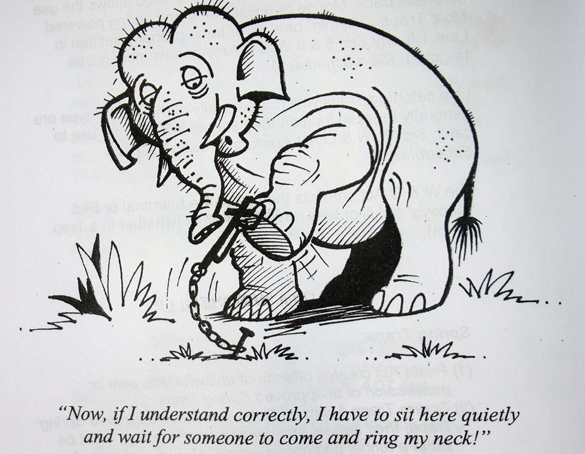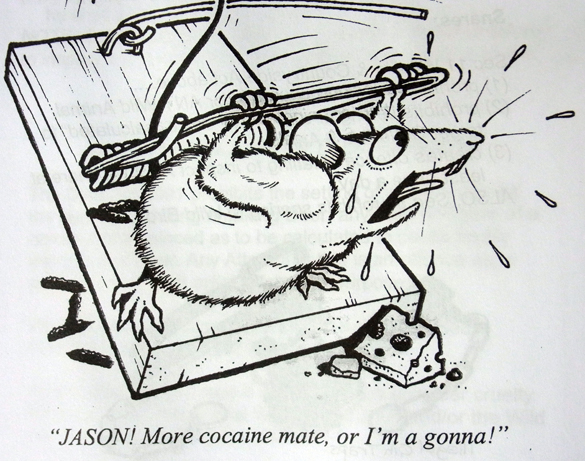It is hot and humid. I am in a natural reserve near the heart of Brisbane, Queensland. I walk up to the J.C. Slaughter waterfalls. There are only rocks. The river is dry. A sign indicates “Aboriginal Art”. A small plaque tells me that these rock paintings from 1993 celebrate the International Year of the World’s Indigenous People and that the aboriginal artists are Laurie Nilsen, Marshall Bell, Laurie Graham and Mark Garlett.
Blow-painting – with dyes spat from the mouth – was a prominent feature of aboriginal painting. Hands and hunting boomerangs were frequently used as stencils. Here, the paintings include, in white, macropod (e.g. kangaroo) tracks. The works have an instant and earthy appeal. I find them beautiful. They take me closer to an ancient culture born of a harsh environment.
A fabulous serpentine form uncoils itself from under the over-hanging rock. I guess snakes feature so prominently in aboriginal folklore because, even today, they represent the greatest danger for anyone who goes walkabout.
A few metres away is a human figure. It is as though the painters wanted to represent the future observer of their beautiful stuff. Is it therefore me?!! Maybe it is J.C. Slaughter himself, the civic-minded administrator who expanded the public amenities of 1960s Brisbane? (I can find no link between him and the falls; he certainly wasn’t their European “discoverer”!)
Despite the fact that these paintings are only twenty-two years old, I accept that they are “aboriginal.” They represent creative impulses of people who were the owners and custodians of this parched land for thousands of years before Captain Cook sailed into Botany Bay and the painters are, I assume, descended from these people. As I walk back down the dusty track, a young woman jogs past; she wears Nike shoes, a pink lycra top and an iPhone strapped to her left upper arm. I reflect on the dual and incomparable stories of humanity’s existence on this huge dry continent. A kookaburra cackles its laugh at me. I have a feeling that the bird is ridiculing my attempt to understand what these paintings really mean for aborigine people. But then, maybe it is just telling me to go away.

